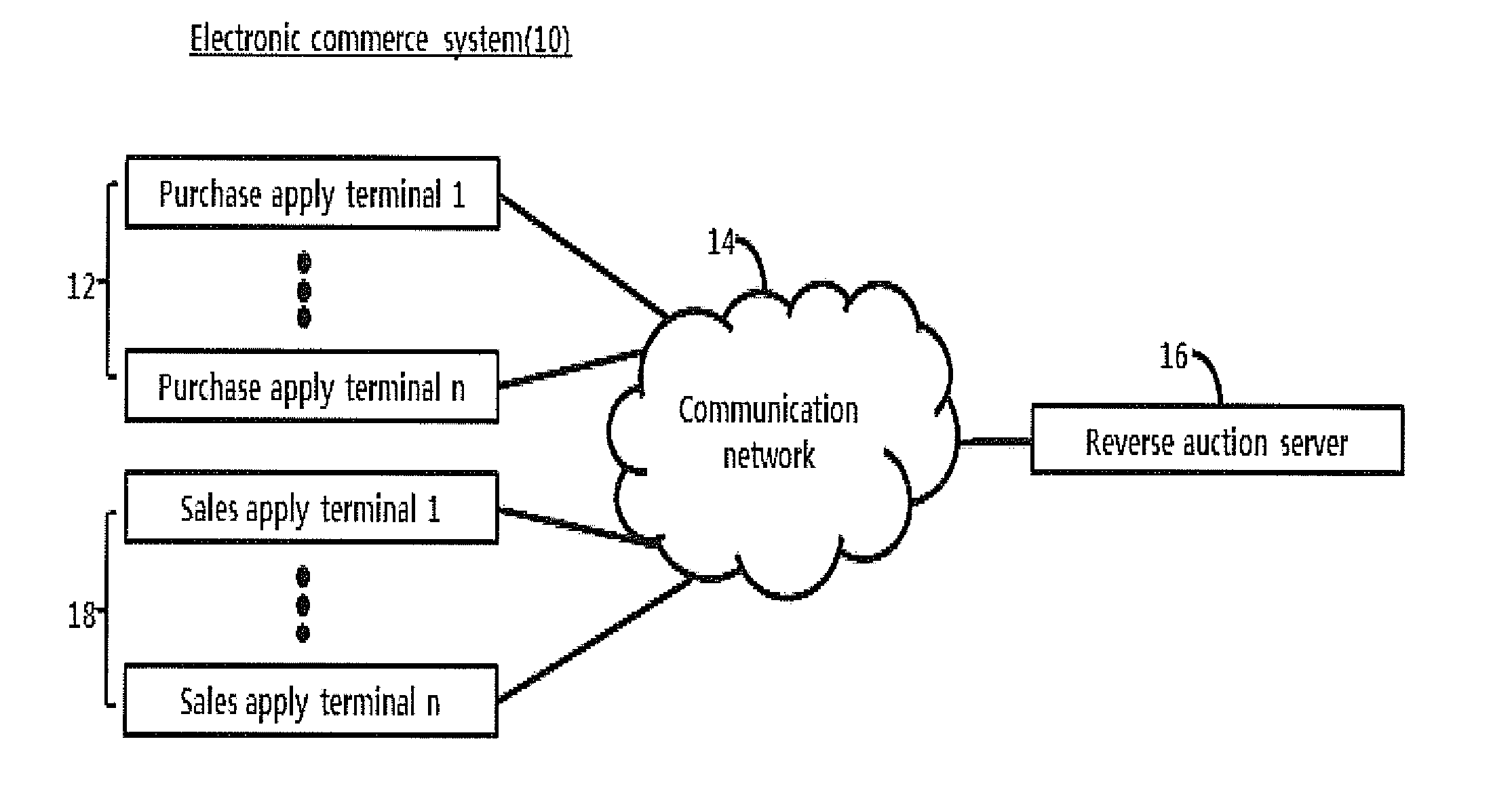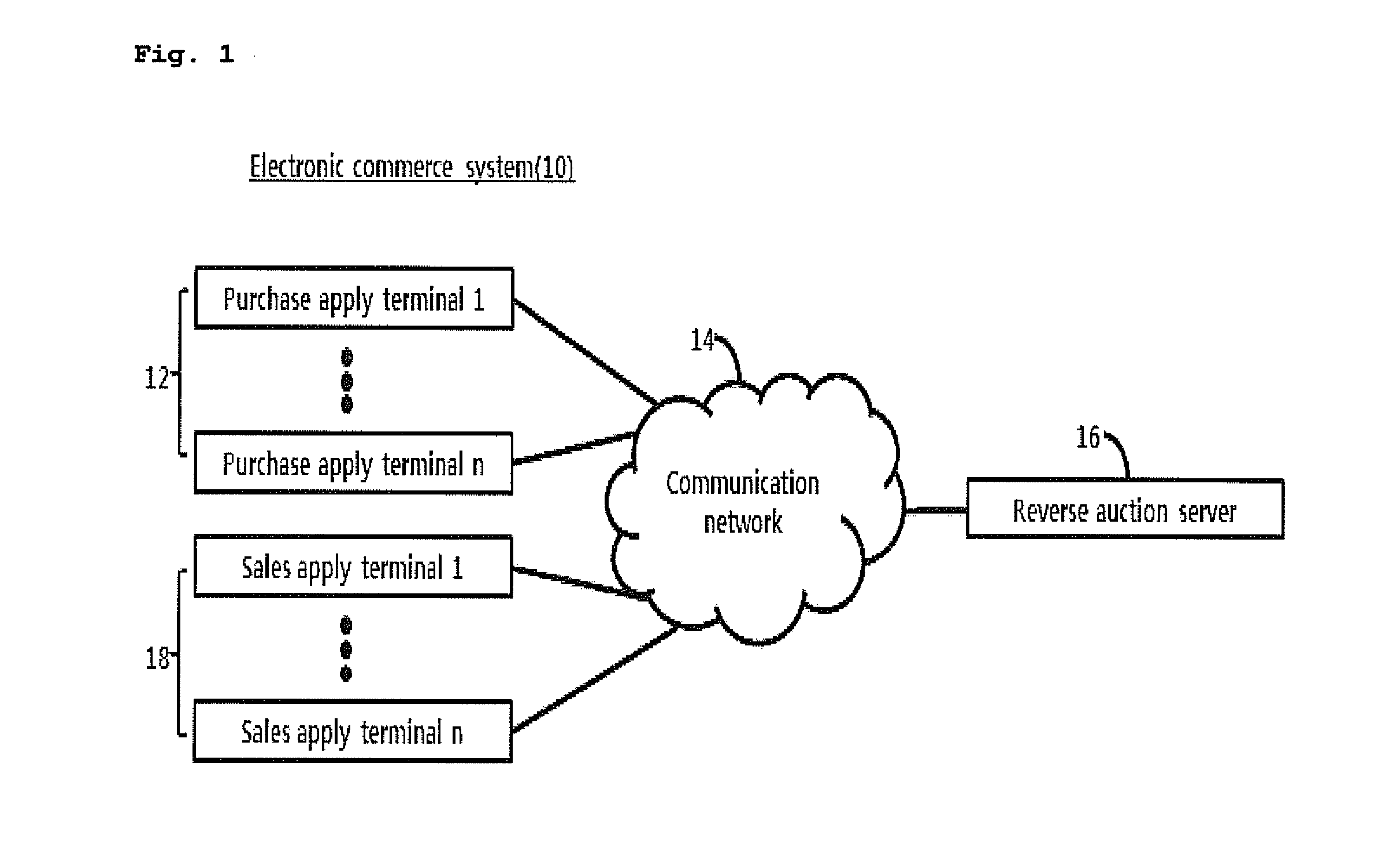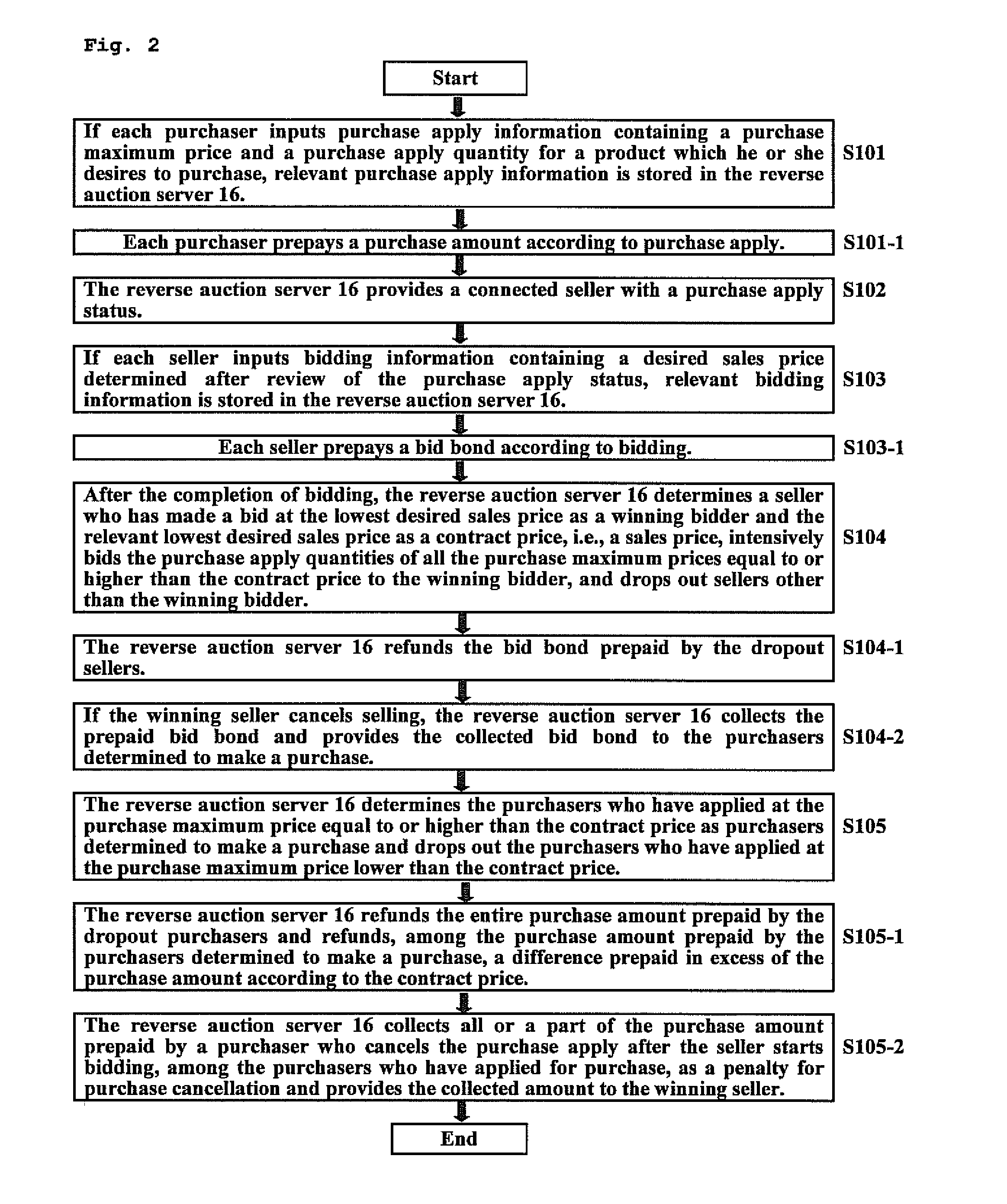Reverse auction method
a reverse auction and auction method technology, applied in the field of reverse auction methods of electronic commerce, can solve the problems of difficult to gather a large number of purchasers, price is not guaranteed, and it is difficult to purchase a desired produ
- Summary
- Abstract
- Description
- Claims
- Application Information
AI Technical Summary
Benefits of technology
Problems solved by technology
Method used
Image
Examples
Embodiment Construction
[0077]Exemplary embodiments of the present invention will be described below in more detail with reference to the accompanying drawings. The present invention may, however, be embodied in different forms and should not be construed as limited to the embodiments set forth herein. Rather, these embodiments are provided so that this disclosure will be thorough and complete, and will fully convey the scope of the present invention to those skilled in the art. Throughout the disclosure, like reference numerals refer to like part throughout the various figures and embodiments of the present invention. The drawings are not necessarily to scale and in some instance, illustrate features of the embodiments.
[0078]Some of terminologies used in the reverse auction method according to the present invention are defined.
[0079]Product: Goods or services that are targets of trade.
[0080]Purchase apply information: Information inputted by each purchaser when the purchaser applies for purchase and provi...
PUM
 Login to View More
Login to View More Abstract
Description
Claims
Application Information
 Login to View More
Login to View More - R&D
- Intellectual Property
- Life Sciences
- Materials
- Tech Scout
- Unparalleled Data Quality
- Higher Quality Content
- 60% Fewer Hallucinations
Browse by: Latest US Patents, China's latest patents, Technical Efficacy Thesaurus, Application Domain, Technology Topic, Popular Technical Reports.
© 2025 PatSnap. All rights reserved.Legal|Privacy policy|Modern Slavery Act Transparency Statement|Sitemap|About US| Contact US: help@patsnap.com



